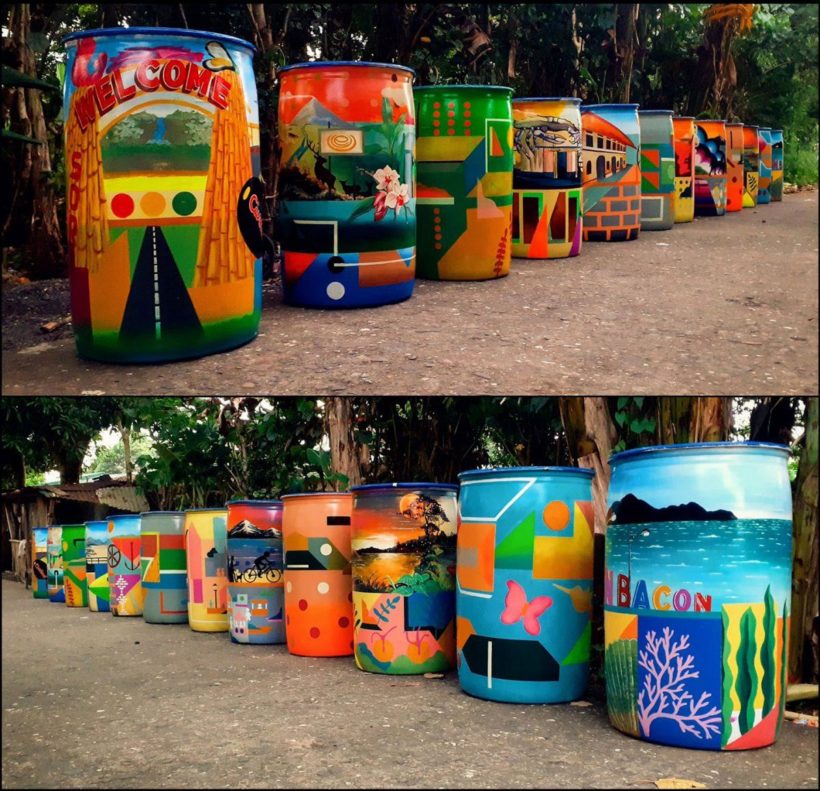VISUAL ARTS
Sorsogon is a city in the Bicol Region located in the southern part of Luzon island, Philippines. Starting out as a mural artists’ group and joining several contests in the city, the group coined the term “Kurit-Lagting” in one of the mural contests organized by the provincial government during a festival. Kurit-Lagting is an amalgamation of two Bicolano words: Kurit means to draw, to mark, or to write in Bikol and Lagting is the hard shell of the Pili nut (one of the provincial icons of Sorsogon province).
Since its inception, this community-based group of artists has painted advocacy-driven murals calling for environmental cleanliness, for clean and honest elections and, has organized art workshops, talks and exhibits. Today, it has artistic engagements and creative partnerships with civil society organizations and private individuals working for good governance and social justice. There is an MOA with the Sorsogon State University through their community extension program to teach children and youth including sessions on art therapy and topics on mental health to be conducted through art.
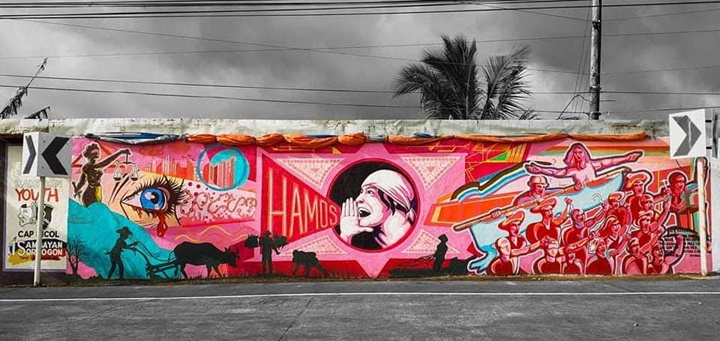
‘Hamos!’: Mural by calls for good governance, social justice
How did it start? Why did this art collective come together?
One of the founders, Geri Matthew Carretero, who functions as overall coordinator of the group said, “In 2007, there were initial talks between me and Allan Abrigo to organize a community-based, multidisciplinary art group in order to cultivate the innate and emergent potentials among Sorsoganons in the arts. That was the start of many community immersions and artist-led projects.
We came from different schools during that time and various art groups but we collectively agreed that instead of competing with each other, we need to come together and collaborate for a cause which is to teach art education and art practice in communities with art advocacies on human rights and the environment. Currently, we are also a member org of the Concerned Artists of the Philippines (under the Bicol Chapter) which was founded by National Artist, Lino Brocka who was born in Sorsogon.”
The Collective
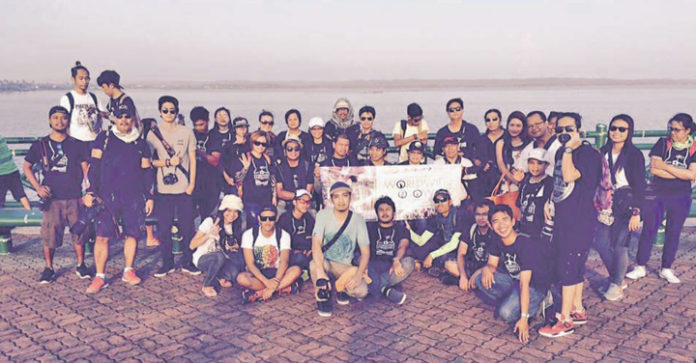
Members and officers at the Sorsogon Baywalk.
According to Gerri Carretero, “When we first started along with the co-founders, we only have around 15 members mostly self-taught with various creative interests (music, visual arts, theater, literature etc.) from different barangays and municipalities in Sorsogon. At present, we now have around 30 plus members (some are inactive due to the challenges of online activities during the pandemic). We have student members, amateurs (self-taught), and professionals (mostly teachers and practicing artists) ages 16 to 60 years old including our advisers. We also had a school-based chapter before the pandemic happened. At present we now have members from different provinces in the Bicol Region.”
The founders and some of the artists. What motivates and inspires them?
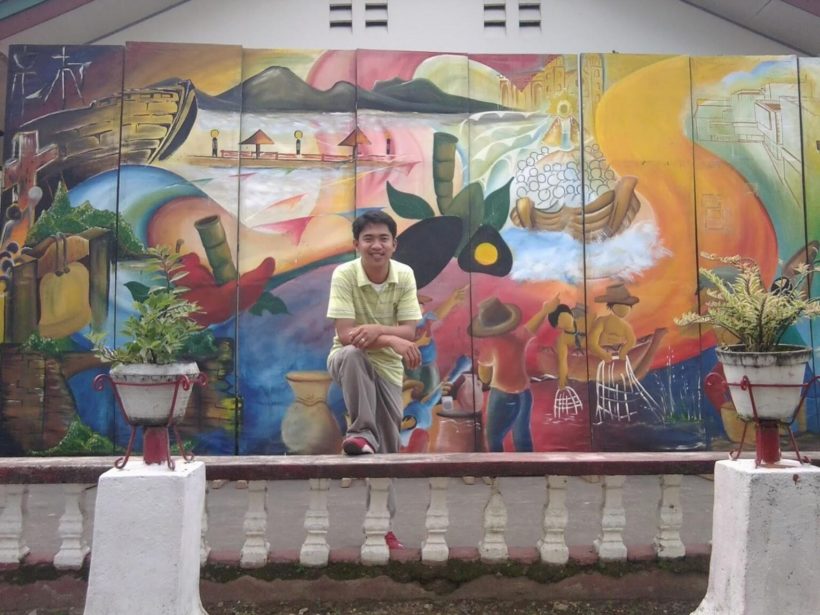
Allan Abrigo in front of his mural.
Allan Abrigo: Being a Kurit co-founding member is something to be proud of but it demands commitment and dedication. Personally, I count this as my responsibility in purveying the truth as a local artist in the community and doing whatever artistic creation and art education we are called on to provide to fellow artists.
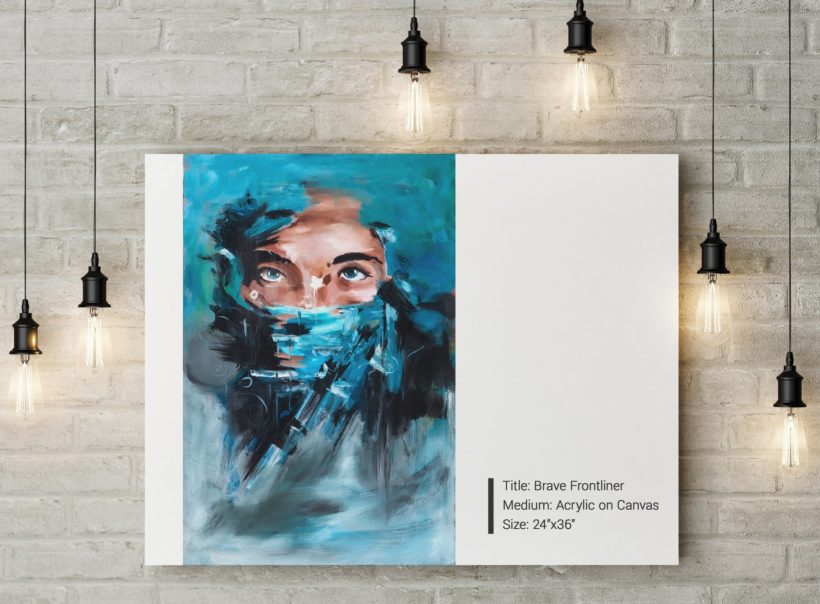
Resmundo Damdam, Brave Frontliner, 2020 Acrylic on Canvas.
Res Demdam: As a member of the art collective, I feel like a part of a family where you learn to support each other and you are taught to be critical thinkers, problem solvers, and advocates on issues concerning the community.
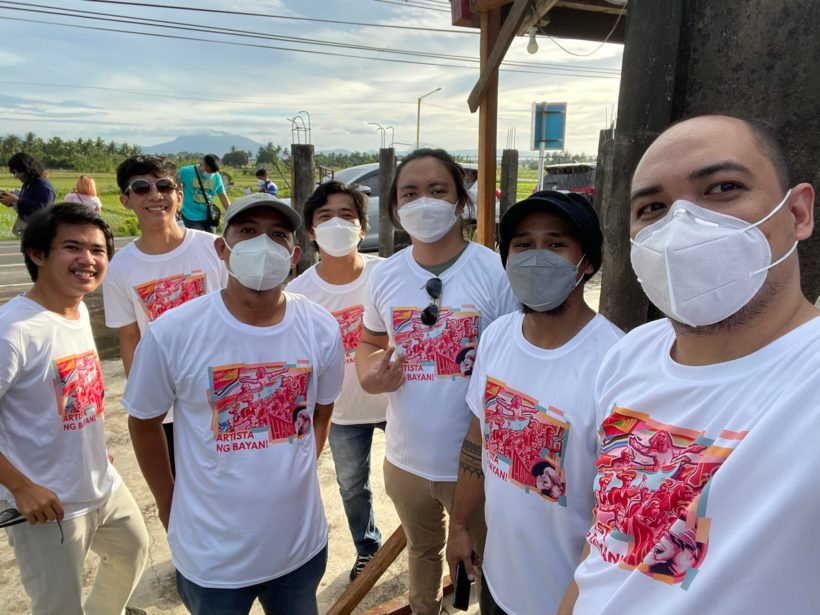
Joseph Bausa (photo: inner left wearing a hat)
Joseph Bausa: When we started this art collective, we committed ourselves to focus on specific causes and issues beyond the current scope of Sorsogon-based art groups. We created murals, literary pieces, music, illustrations, and drawings that tell stories about the struggles of communities and the need for an inclusive art and environmental policy that would protect our communities and the environment.
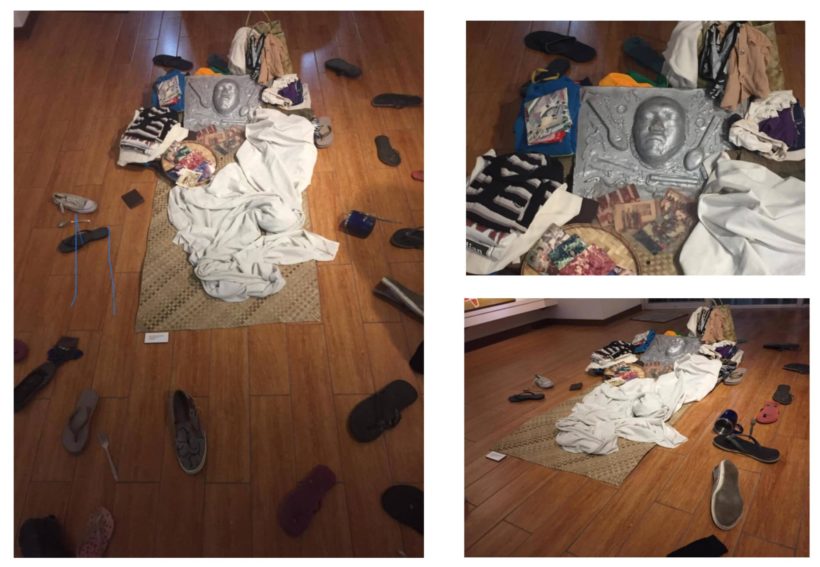
Desplazado by Geri Matthew Carretero. Art Installation.
Geri Matthew Carretero: As one of the co-founders, it opened my eyes to the concerns in our own communities. Through this collective, we were able to create impactful artworks while highlighting important social and environmental causes and to be able to have a meaningful change for society by raising public awareness of critical issues.
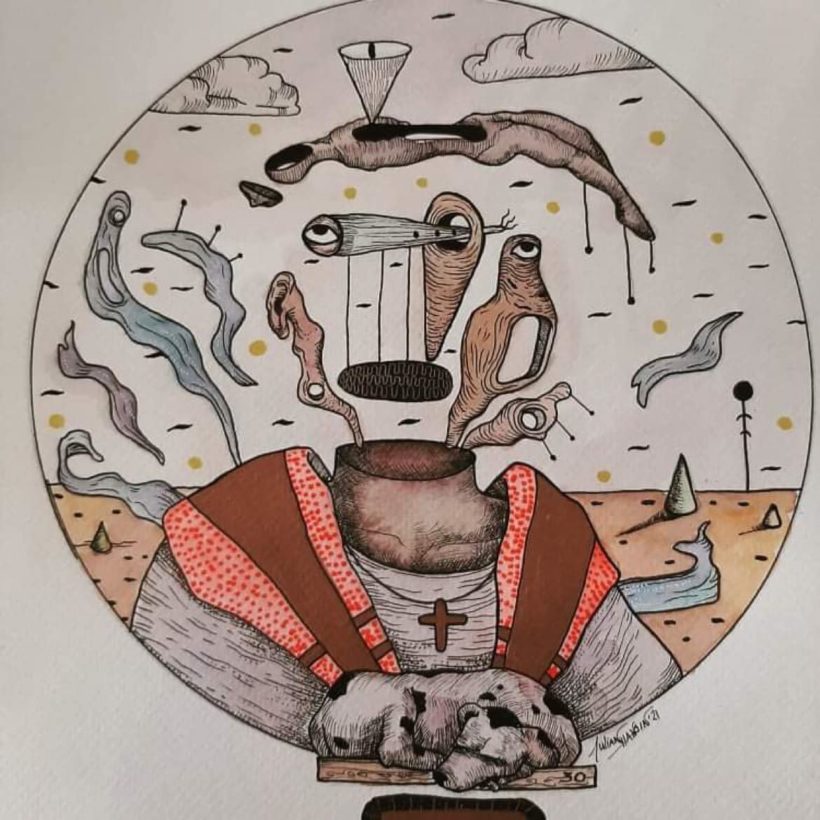
Jhon Fred Manaligod. Untitled.
Jhon Fred Manaligod: As artists, we are always searching for the true purpose of art and what art serves. That is why I joined the art collective in order to find the answer to that inquiry. As part of the collective, we should always look and stand for the truth. We are creating artworks in different forms to communicate to the people, to the society to help them and be informed of the reality in our society.
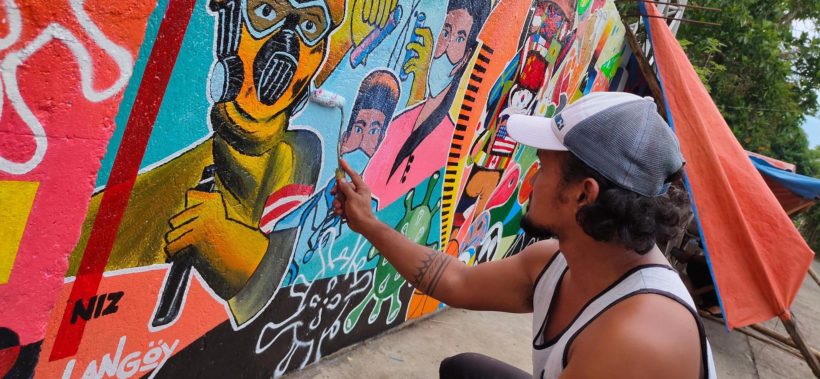
Gilbert Catabian at work.
Gilbert Catabian: As a member of the art collective, I was able to hone my skills and talents. During this pandemic, we encountered a lot of challenges but as a tight-knit group, we missed going to physical community spaces, particularly in barangays located in coastal areas where most community members live. Part of my experiences in the art collective are the activities on storytelling, visual mapping workshops, talks and interactions with the members of the community. You really have a sense of belonging when you are in this group.
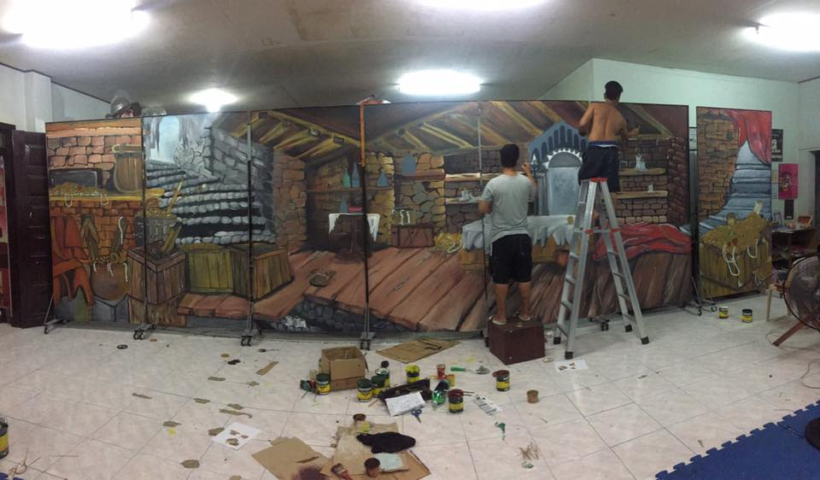
The Demdam cousins working on a painting to serve as backdrop for the S-CBTG.
Jilmar Demdam: We were also able to develop and showcase artistic works that show the power of art in depicting real-life situations. At present, even though we are not able to mount face-to-face activities, this collective still brings together artists online who share the same goal in narrating stories from communities and their own experiences about the ongoing health crisis
In a nutshell, the members say “We become better aware of ourselves, what we can offer to the community as artista ng bayan. We realize that being members of the group is not about prestige but about service.”
According to the groups’ advisers, Prof. Amelita Bernal and Prof. Marigrace Carretero: “To serve our purpose as bearers of change and social reconstruction through art. It is not individual gratification but collective effort of sharing what we know, what we can, and what we believe is contributory to a better community…We educate, inform and commit to serve and share our art.”
Listening to the voices of Kurit-Lagtina artists, seeing the body of work that can be created and shared when a group of artists comes together is an example of how art can contribute towards the betterment of a community, towards an aspired-for future.
See more of their work here:


